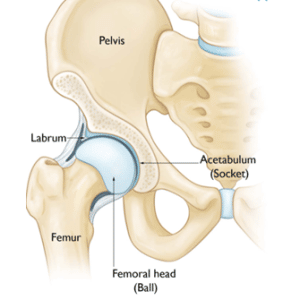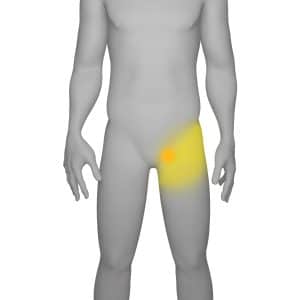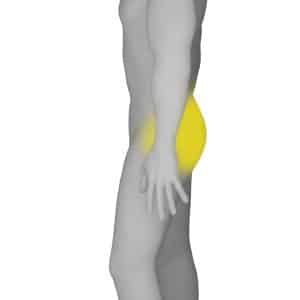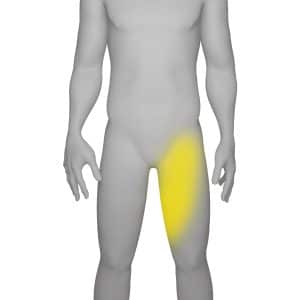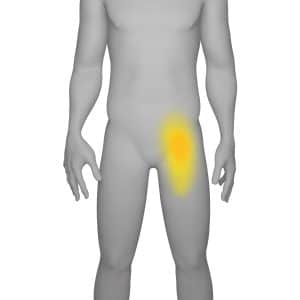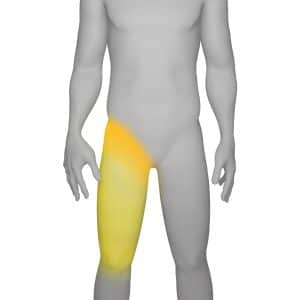Your hip
The hip joint is a ball and socket joint between the top of the thigh bone (femur) and the pelvis which lies deep in the groin. It consists of a ball (femoral head) at the top of your femur and a socket (acetabulum) in your pelvis. The surfaces of the ball and socket are covered by a smooth, low friction material called articular cartilage, which cushions the bones and lets them move easily.
Ligaments and muscles help keep the ball stable and supported within the socket whilst allowing a large range of movement. The hip joint bears the full weight of your body.
In fact, when you walk, the force transmitted through your hip can be up to three times your body weight. As well as transmitting weight, the hip needs to be able to move freely to enable you to function normally. Muscles surrounding the hip such as your buttock (gluteal) and thigh muscles (quads) are also important in keeping your hip strong and preventing a limp.
